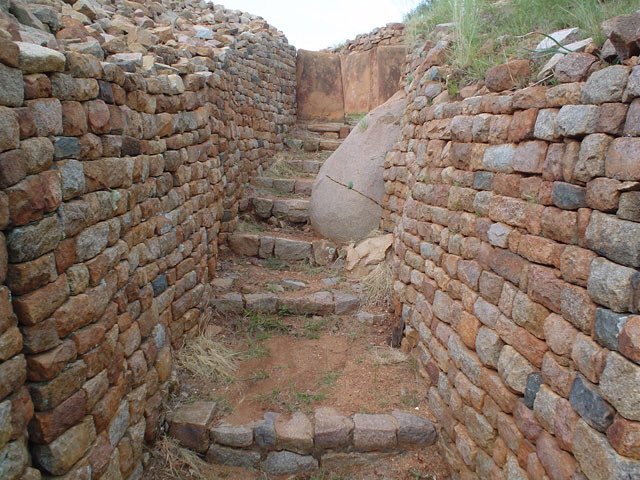.
BaPedi
.
Also known as the Northern Sotho or Basotho ba Leboa and the Marota or Bamaroteng, are a southern African ethnic group that speak Pedi or Sepedi, a dialect belonging to the Sotho-Tswana enthnolinguistic group.
BaPedi
.
Also known as the Northern Sotho or Basotho ba Leboa and the Marota or Bamaroteng, are a southern African ethnic group that speak Pedi or Sepedi, a dialect belonging to the Sotho-Tswana enthnolinguistic group.
Northern Sotho is a term used to refer to one of South Africa's 11 official languages. Northern Sotho or Sesotho sa Leboa consist of 30 dialects, of which Pedi is one of them. BaPedi are almost exclusively found in South Africa's northeastern provinces which are Limpopo, and..
parts of northern Mpumalanga. Other Northern Sotho tribes can be found in South Africa's northwestern provinces, and speak various other dialects. Examples of tribes with variations of Northern Sotho are found in Ga Mamabolo, Ga Mothiba, Ga Dikgale and Ga Mothapo.
Some clans in tribes that speak variations of Northern Sotho can be traced back to the Kalanga-Tswana-Sotho group originating from earlier states such as Great Zimbabwe and Butua.
The Kingdom of Butua or Butwa was a pre-colonial African state located in what is now southwestern Zimbabwe. Butua was renowned as the source of gold for Arab and Portuguese traders. The region was first mentioned in Portuguese records in 1512.
The kingdom was governed by the Torwa dynasty until 1683 from its capital at Khami. Its people were ancestors of the Bakalanga. In 1683, the kingdom was conquered by the Lozwi/Lozi/ Rozwi Empire.
The foundations of the Khami Ruins show a striking resemblance to the pattern of masonry at the base of the Zimbabwe Ruins. Hence the Kalanga are thought to have built Khami, Lusvingo, Mapungugwe and other ruins scattered across western Zimbabwe and east Botswana.

BaSotho migrated south from the great lake region in east Africa making their way along with modern-day western Zimbabwe through successive waves spanning 5 centuries with the last group of Sotho speakers,the Hurutse,settling in the region west of Gauteng around 16th century.
It is from this group that the Pedi/Maroteng originated from the Tswana speaking Kgatla offshoot. In about 1650 they settled in the area to the south of the Steelpoort River where over several generations, linguistic and cultural homogeneity developed to a certain degree.
Only in the last half of the 18th century did they broaden their influence over the region, establishing the Pedi paramountcy by bringing smaller neighboring chiefdoms under their control.
During migrations in and around this area, groups of people from diverse origins began to concentrate around dikgoro or ruling nuclear groups. They identified themselves through symbolic allegiances to totemic animals such as tau (lion), kolobe (pig) and kwena (crocodile).
The Marota Empire/ Pedi Kingdom
The Pedi polity under King Thulare (1780-1820) was made up of land that stretched from present-day Rustenburg to the lowveld in the west and as far south as the Vaal river.Pedi power was undermined during the Mfecane, by Ndwandwe invaders from...
The Pedi polity under King Thulare (1780-1820) was made up of land that stretched from present-day Rustenburg to the lowveld in the west and as far south as the Vaal river.Pedi power was undermined during the Mfecane, by Ndwandwe invaders from...
the south-east. A period of dislocation followed, after which the polity was re-stabilized under Thulare's son Sekwati. Sekwati succeeded Thulare as paramount chief of the Pedi in the northern Transvaal (Limpopo) and was frequently in conflict with the Matebele (Mzilikazi-Zim  )
)
 )
)
and plundered by the Zulu and the Swazi. Sekwati has also engaged in numerous negotiations and struggles for control over land and labor with the Afrikaans-speaking farmers (Boers) who had since settled in the region.
These disputes over land occurred after the founding of Ohrigstad in 1845, but after the town was incorporated into the Transvaal Republic in 1857 and the Republic of Lydenburg was formed, an agreement was reached that the Steelpoort River was the border between the Pedi & the...
Republic. The Pedi were well equipped to defend themselves though, as Sekwati and his heir, Sekhukhune I were able to procure firearms, mostly through migrant labor to the Kimberley diamond fields and as far as Port Elizabeth. The Pedi paramountcy's power was also cemented by...
the fact that chiefs of subordinate villages, or kgoro, take their principal wives from the ruling house. This system of cousin marriage resulted in the perpetuation of marriage links between the ruling house and the subordinate groups, and involved the payment of inflated...
bohadi or bridewealth, mostly in the form of cattle, to the Maroteng house.

 Read on Twitter
Read on Twitter




